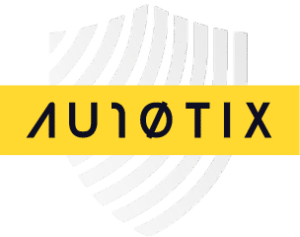Understand your risk profile and gain insights to enhance your business security.
Understanding Fraud Risk Assessment
Fraud risk assessment is essential to safeguarding your organization’s integrity and financial health. Understanding fraud risk assessment, its importance, and the methodologies to execute it effectively can mean the difference between resilience and vulnerability. Let’s get more acquainted with how this works.
The Importance of Fraud Risk Assessment
Contrary to popular belief, fraud risk assessment isn’t just about identifying existing fraud- it’s about proactively mitigating potential risks that could compromise your business operations. By conducting a thorough fraud risk assessment, companies can identify weaknesses in their internal controls and take preventative measures to stop fraud before it occurs.
For example, consider a mid-sized e-commerce company approaching the holiday season. We, as consumers, decide to save some time and do our gift shopping online. Fraudsters who catch on to this surge in business might target the specific retailer under the cloak of the website’s increased traffic. The company can identify patterns by conducting a fraud risk assessment, such as multiple orders from the same IP address using different credit cards. This insight allows them to enhance verification processes during high-risk periods.
Fraud Risk Evaluation Process Explained
Conducting a fraud risk assessment involves several equally important steps, each designed to ensure a comprehensive evaluation of potential risks. Let’s break it down step by step.
Identifying Potential Risks
The first step in the fraud risk assessment process is identifying potential risks relevant to your organization. This involves analyzing various factors such as industry-specific threats, historical data on fraud incidents, and internal audit reports.
For example, a financial institution might face money laundering and insider trading risks, while a retail company might be more susceptible to credit card fraud and inventory theft. In anything fraud-related, knowledge is power, and learning about risks to your company can help you focus your preventative measures.
 AU10TIX Risk assessment Report
AU10TIX Risk assessment Report
Assessing the Likelihood and Impact
The next step is to assess the likelihood and potential impact of each fraud risk. This involves evaluating the probability of each fraud scenario and the severity of its consequences. Tools like risk matrices can help visualize and prioritize these risks.
Let’s briefly look at two cases: Phishing attacks that target employee credentials would require immediate attention, while petty cash theft could be managed with less intensive measures.
Implementing Controls and Mitigation Strategies
After identifying and assessing the risks, it’s time to implement appropriate mitigation strategies. This can include establishing internal controls, conducting regular audits, and enhancing employee training programs.
One such measure you can take is segregating duties within the accounting department. This can prevent unauthorized transactions and reduce the risk of internal financial fraud; you can never be too safe. Additionally, implementing two-factor authentication for all employee accounts can significantly reduce the risk of unauthorized access.
Monitoring and Reviewing
The fraud risk assessment process doesn’t end here. Continuous fraud monitoring and periodic reviews are essential to ensure that the solutions remain effective and that new risks are promptly identified and addressed.
For instance, a company might use data analytics tools to continuously monitor transaction patterns for anomalies. Technology solutions like our new fraud detection tool can significantly enhance monitoring capabilities by providing real-time alerts and detailed analysis of potential fraud activities.
Selecting a Fraud Risk Assessment Template
As stated before, choosing the proper fraud risk assessment for you is a must. A well-designed template eases this whole process, ensuring consistency, comprehensiveness, and user-friendliness. It provides a structured approach to documenting and evaluating fraud risks, making the process more efficient and effective.
Custom Templates vs. PwC’s Standard Approach
When selecting a fraud risk assessment template, you usually choose between custom templates tailored to your specific needs and standard templates such as those provided by PwC. Custom templates offer the advantage of being unique to your risks and requirements. For example, a tech startup might need a template emphasizing cybersecurity risks, while a manufacturing company might focus more on supply chain vulnerabilities.
On the other hand, the fraud risk assessment template PwC offers is built on quality practices and can provide a reliable and proven framework for your assessments. This template is especially beneficial for organizations new to fraud risk assessment, as it covers a broad range of potential risks and mitigation strategies.
Integrating Fraud Risk Analysis into Your Business
Integrating fraud risk analysis into your business involves more than adopting a template. You should engage all levels of your organization in fraud awareness training, promote ethical behavior, and ensure that fraud risk assessment is an ongoing process rather than a one-time activity.
Regular training sessions can be held to keep employees updated on the latest fraud schemes and how to recognize them. Additionally, implementing a whistleblower policy can encourage employees to report suspicious activities without fear of retaliation.
Best Practices for Conducting Fraud Risk Assessments
As you can probably understand from what we’ve talked about, fraud risk assessment is a general concept that needs to be tailored specifically to you. With that said, we have some general tips that should be standard practice in any workplace.
Engage senior management:
Ensure senior management is actively involved in fraud risk assessment. Their support and knowledge are crucial for allocating resources and prioritizing fraud prevention efforts. If your CFO leads the fraud risk discussions, it will hold more weight and underline the initiative’s importance.
Create a fraud-aware culture:
Promote and reward honesty, integrity, and ethical behavior among your employees. Encourage them to report suspicious activities, possibly through an anonymous reporting system.
Take advantage of technology:
Utilize advanced technology solutions, such as fraud detection tools, to enhance your fraud risk assessment process. These tools can provide real-time insights and automate parts of the assessment. For example, AI-driven analytics can quickly identify unusual transaction patterns that may indicate fraudulent activity. Point-of-sale (POS) identification aids in preventing fraud at the transaction level. By verifying the identity of individuals making purchases, you can reduce the risk of fraudulent activities such as credit card fraud and unauthorized transactions.
Regularly update assessments:
Fraud risks change over time; no permanent solution exists. It’s important to regularly update your fraud risk assessment to reflect new threats and changes in the business environment. Let’s say business is booming, and you decide to expand into new markets. You will likely face fraud risks that are different from operating solely in your home country.
Advanced Techniques in Fraud Risk Calculation
One important takeaway, if nothing else, is that fraud constantly changes. Advanced techniques in fraud risk calculation involve incorporating data analytics, machine learning, and artificial intelligence to predict and prevent fraud more effectively.
Machine learning algorithms can analyze vast amounts of transaction data to identify patterns indicative of fraudulent behavior. Similarly, predictive analytics can help forecast future fraud trends based on historical data, allowing you to stay ahead of the game.
Conclusion
Implementing a fraud risk assessment process is an intelligent step in combating fraud; don’t wait to be a victim. You can be much more at ease by understanding the various steps involved, selecting the suitable fraud risk assessment template, and utilizing advanced technologies like ours. Feel free to contact us. At AU10TIX, we’re dedicated to providing you with the best solutions for your business.
What is fraud risk assessment?
Fraud risk assessment is a systematic process of identifying, evaluating, and mitigating fraud risks within an organization. It involves analyzing potential fraud scenarios, assessing their likelihood and impact, implementing controls, and continuously monitoring and reviewing the effectiveness of these controls.
Why is a fraud risk assessment template important?
A fraud risk assessment template is essential because it provides a structured and consistent approach to documenting and evaluating fraud risks. It ensures that all relevant risks are considered and helps streamline the assessment process.
How does AU10TIX’s new tool enhance the fraud risk assessment process?
Our new tool enhances the fraud risk assessment process by leveraging advanced technology to provide real-time insights and automate parts of the assessment. This tool can detect fraudulent activities quicker and more accurately than our competition, allowing you to respond promptly and effectively.
What are the key components of a fraud risk assessment process?
The key components of a fraud risk assessment process include identifying potential fraud risks, assessing the likelihood and impact of each risk, implementing controls and mitigation strategies, and continuously monitoring and reviewing the effectiveness of these controls.






